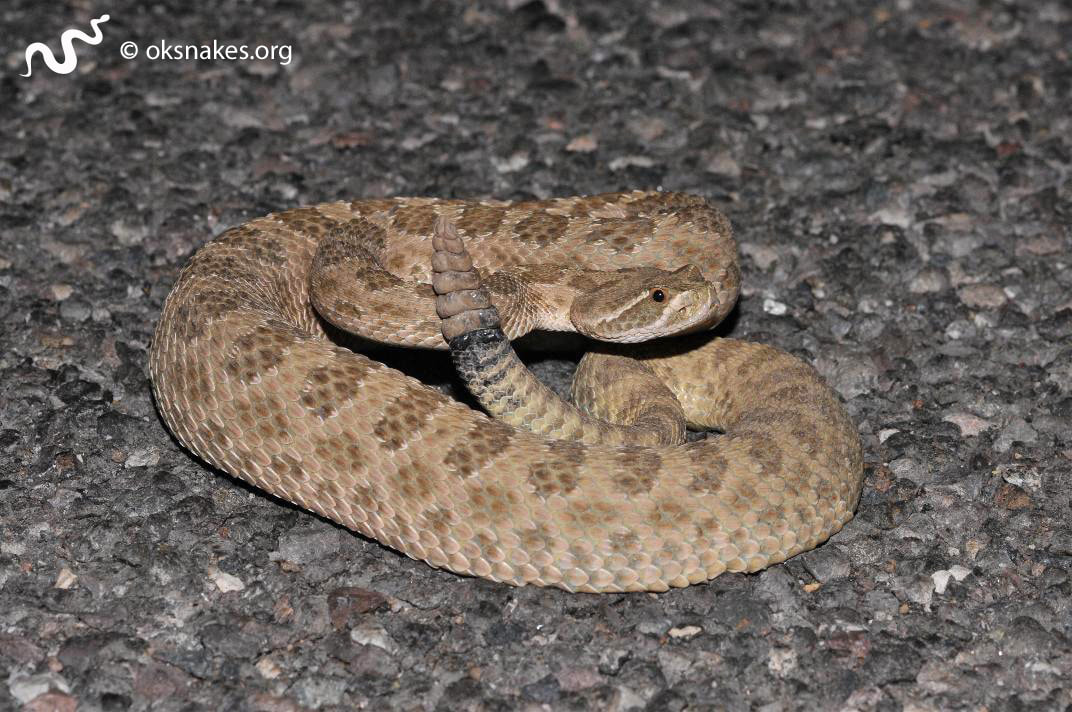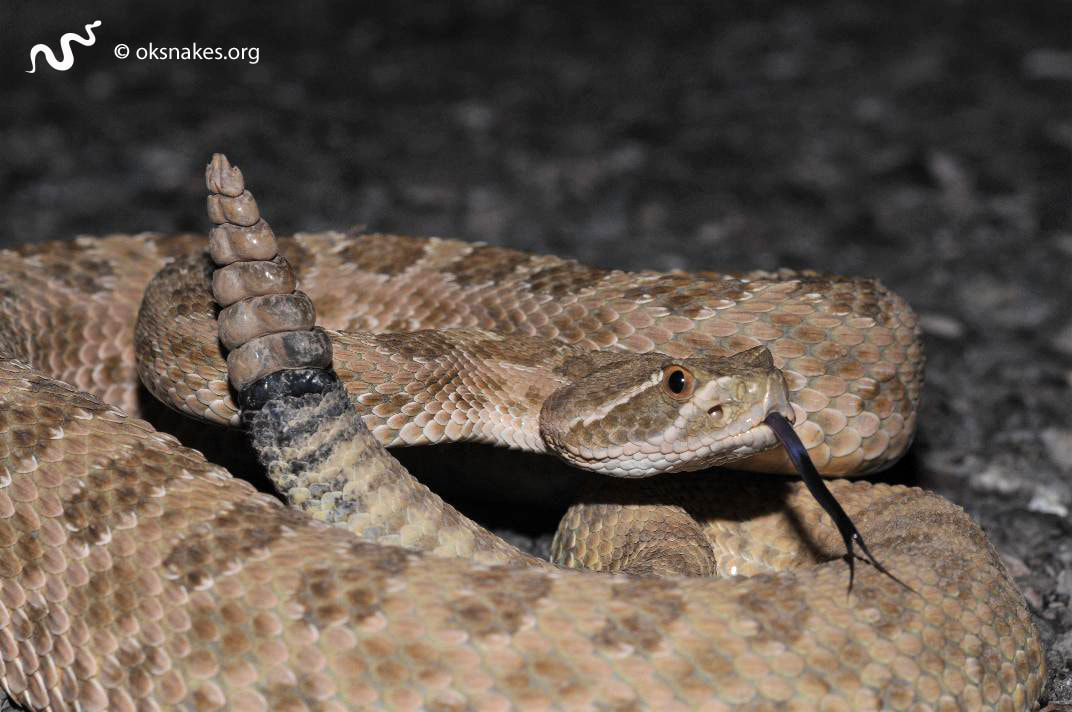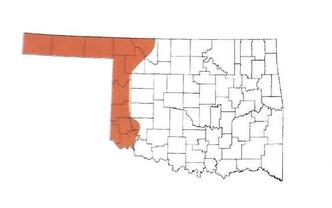Prairie rattlesnake
Crotalus viridis
Crotalus viridis
VENOMOUS
Description:
Has dark brown blotches along its back that may be oval, squarish, or hexagonal in shape. The belly has no pattern and is a white or gray color, and it has gray bands that ring the end of the tail just before the rattle. This snake has keeled scales, a vertical pupil (not round *), and an obvious heat-sensing pit between the eye and nostril.
* Note: Pit viper pupils can often appear round in certain lighting, such as in photos utilizing a flash. Do NOT use pupil shape as a sole means to identify any snake in Oklahoma.
Size:
Adults 32 - 46 inches (81 - 117 cm)
Prey:
Rodents and other small mammals, lizards, and ground-dwelling birds.
Reproduction:
Mates in spring and gives birth to live young in late summer to early fall. Typically has 4 - 20 babies that are 8 - 10 inches (20 - 25 cm) long.
Habitat:
Grasslands, rocky outcrops, and areas near prairie dog towns.
Other Information:
Easily aggravated, this snake is quick to defend itself if threatened. Seeks winter shelter with other rattlesnakes in large, rocky communal den sites. If rocky areas aren't available, individuals may overwinter in mammal burrows.
Why doesn't the range map show this species in my county?
Description:
Has dark brown blotches along its back that may be oval, squarish, or hexagonal in shape. The belly has no pattern and is a white or gray color, and it has gray bands that ring the end of the tail just before the rattle. This snake has keeled scales, a vertical pupil (not round *), and an obvious heat-sensing pit between the eye and nostril.
* Note: Pit viper pupils can often appear round in certain lighting, such as in photos utilizing a flash. Do NOT use pupil shape as a sole means to identify any snake in Oklahoma.
Size:
Adults 32 - 46 inches (81 - 117 cm)
Prey:
Rodents and other small mammals, lizards, and ground-dwelling birds.
Reproduction:
Mates in spring and gives birth to live young in late summer to early fall. Typically has 4 - 20 babies that are 8 - 10 inches (20 - 25 cm) long.
Habitat:
Grasslands, rocky outcrops, and areas near prairie dog towns.
Other Information:
Easily aggravated, this snake is quick to defend itself if threatened. Seeks winter shelter with other rattlesnakes in large, rocky communal den sites. If rocky areas aren't available, individuals may overwinter in mammal burrows.
Why doesn't the range map show this species in my county?


